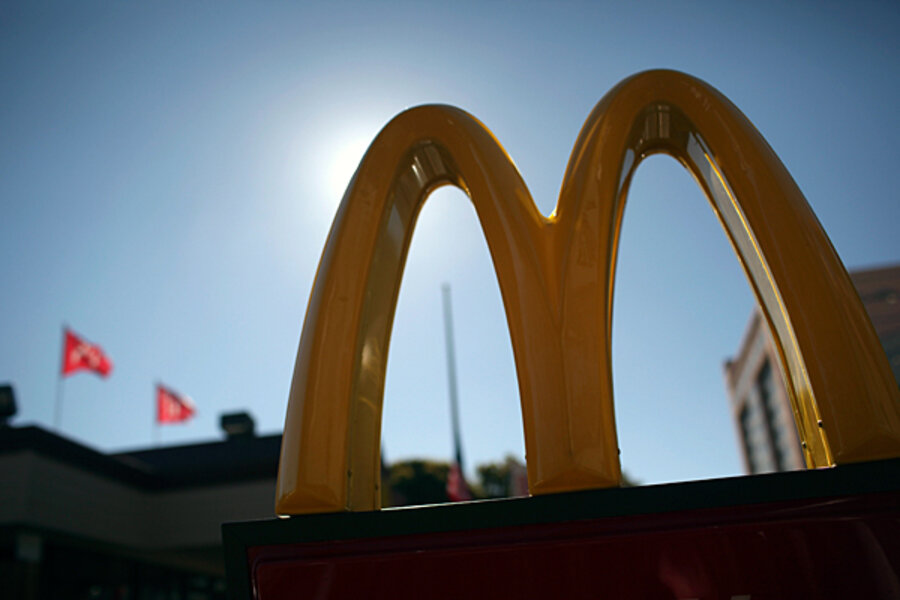Going green: Forget the McNugget eaters, target McDonald's itself
Loading...
In the 1990s, getting people to say they cared about disappearing rain forests and the homeless orangutans and tigers they were leaving behind wasn't that hard for activist groups like Greenpeace.
But translating expressions of concern into real action by the corporate titans involved in the timber business and associated industries that rely on clearing forests – everything from paper to palm oil to soy and cattle – was something else again. Time and again promises would be made by companies, but then broken.
Big buyers in the United States didn't have much to worry about, because while the average consumer would respond "of course" to the question "is it worth preserving rain forests?," that's not what's on a consumer's mind when he's at Home Depot looking for a sheet of plywood.
Rolf Skar, a forest campaigner for Greenpeace for the past six years, says his organization's efforts used to be scattered, and national in scope. The Greenpeace group in Britain would hold a protest, and perhaps make a little headway in consumer awareness. Similar efforts would happen in the US or in Sweden.
But in the middle of the last decade, the activist group came to the conclusion that it needed to focus and coordinate efforts globally and that "we needed a much bigger market hammer."
The McDonald's campaign
If recent successes are anything to go by, Greenpeace and similar environmental groups have found that hammer. Mr. Skar reckons that the first step in the new approach was in the Amazon, with campaigns in 2005 and 2006 that targeted McDonald's. The company was involved in deforestation in Brazil, since it was a major purveyor of Brazilian-grown soy in the form of the ubiquitous McNugget.
The Greenpeace campaign not only called out McDonald's, but gave it and other big buyers a way out: Work with us to adopt standards for your operations.
"It was a template shift for us," Skar says. "We took lessons we had learned in the Amazon where it was the soy industry first and then the cattle industry, finding a way to make companies pay in ways that matter to their customers ... we realized that we had more power than we thought."
He describes the old campaigns as composed of "don't buy this or don't buy that, just scratching the surface of market share in North America.
"But we found that if we could get at the companies buying this stuff, you can create enormous financial and reputation risk.... If we could line up with key brands in key market countries, like McDonald's, you could get the whole soy industry in Brazil to shift."
To be sure, there's still plenty to worry about. Lafcadio Cortesi, head of forest campaigns for the Rainforest Action Network, points out that Asia Pulp & Paper Co. Ltd. (APP) has been down this road before. In 2004, the company signed a similar deal brokered by the World Wildlife Fund, but it ended up being worth little more than the paper it was printed on.
Keeping market access
But Mr. Cortesi also says he feels something shifting. In part, that's because so little natural forest remains. But it's also because of the company's wanting to maintain market access, and a slow shift in environmental concern in Indonesia itself.
"I think they've [APP] realized they have to engage this at a higher level than PR.... The negotiations that we've had have been at the highest levels of the company, and that's very new."
What's next? If all goes well, Rainforest Action Network will turn APP into an ally, the way McDonald's has become one. "This marks a first step in reforming how the pulp and paper sector and hopefully land use takes place in Indonesia," Cortesi says.
APP is both rich and politically influential, he says. If it's playing by tougher rules, won't it demand the same of competitors? "I'm hoping that they'll be forcing change," Cortesi says.
A pulp and paper company becoming a campaigner for tougher environmental protection of the world's dwindling forests?
Change indeed.






